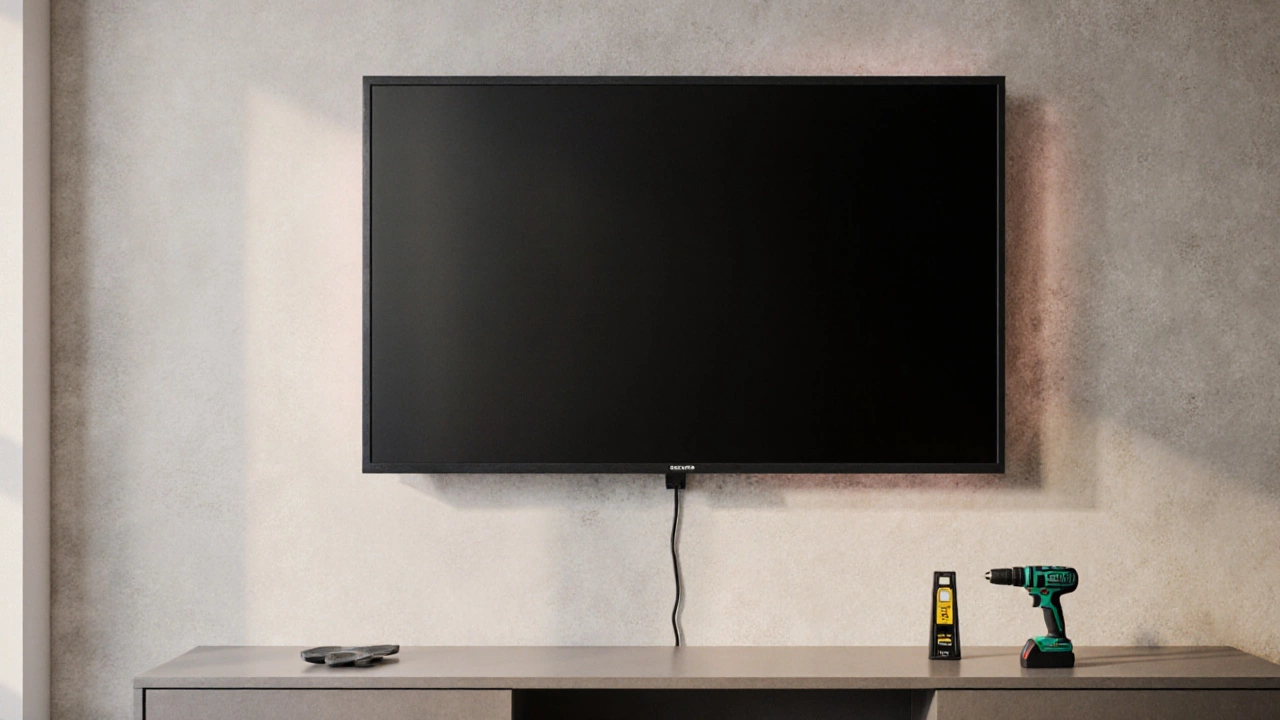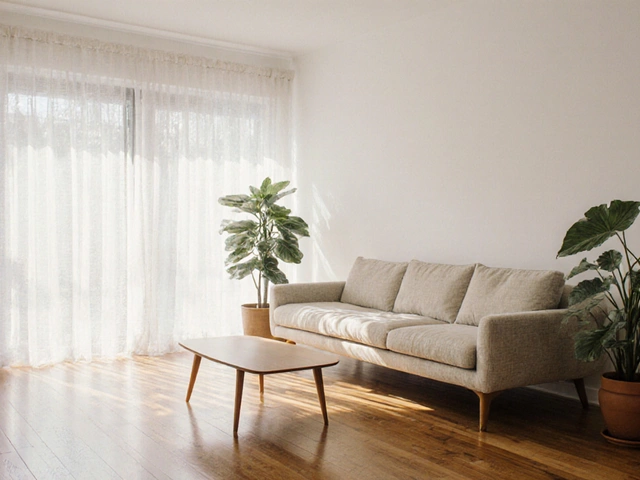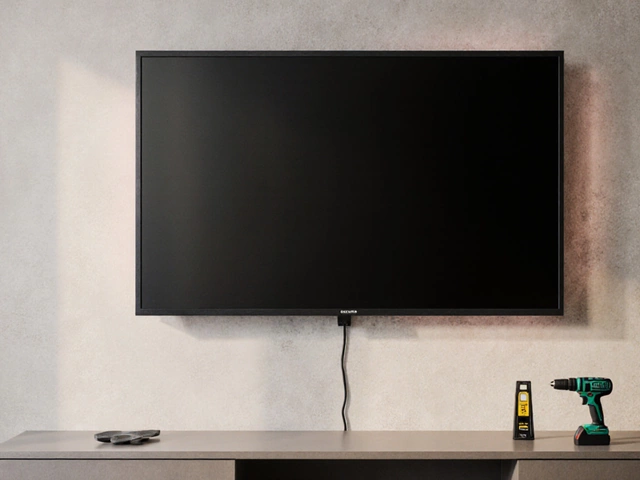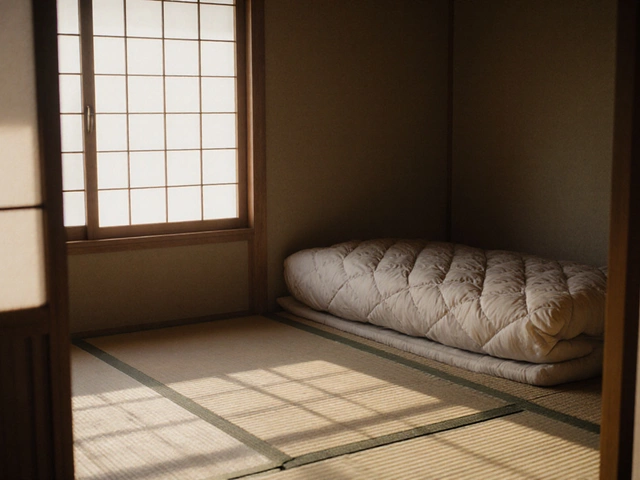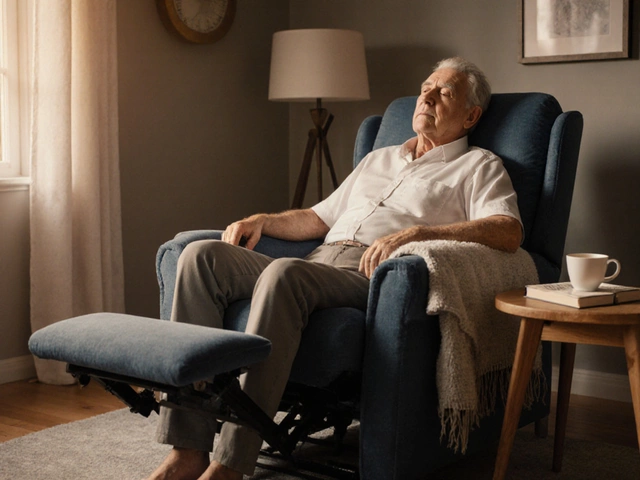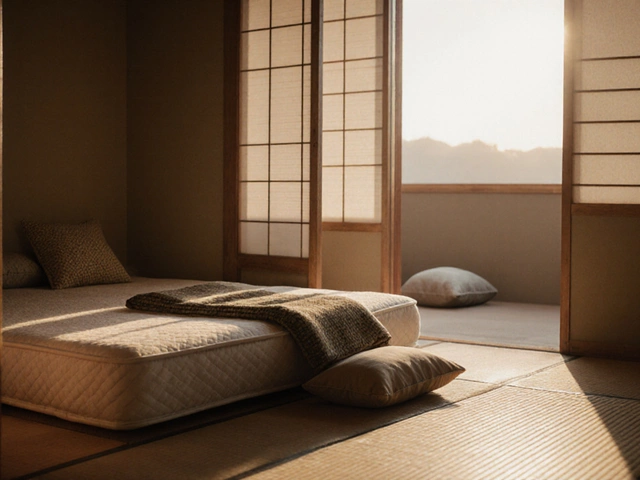TV Mounting Safety Calculator
TV Specifications
Recommended Solutions
Ever bought a new TV only to realize the stand doesn’t fit your space? Or maybe your old stand broke, and you’re stuck with a heavy screen sitting awkwardly on the floor. You don’t need to buy a new stand right away. There are plenty of safe, affordable, and clever ways to keep your TV up without one-no fancy tools or professional help required.
Use a Wall Mount (Even a Basic One)
The most reliable way to keep your TV up without a stand is to mount it on the wall. You don’t need a fancy articulating arm. A simple fixed wall mount costs under $30 and works for most TVs under 65 inches. Look for one that matches your TV’s VESA pattern-this is the hole spacing on the back of the TV. Most modern TVs have a 100x100mm or 200x200mm pattern. Check your manual or measure it yourself with a ruler.
Mounting isn’t as scary as it sounds. You’ll need a drill, a level, and wall anchors if you’re not hitting a stud. Drywall anchors rated for 50+ pounds work fine for TVs under 50 pounds. If your TV weighs more, find a stud. A stud finder costs $15 and pays for itself in peace of mind. Once mounted, your TV sits flush against the wall, looks sleek, and frees up floor space.
Install a Floating Shelf
If you’re not ready to drill into the wall for a mount, a heavy-duty floating shelf is a great middle ground. These shelves look like they’re floating, but they’re actually supported by hidden brackets that attach to wall studs. Pick one rated for at least 50 pounds-many go up to 100 pounds.
Measure your TV’s base width. Make sure the shelf is at least 2 inches wider on each side. A 40-inch TV needs a shelf at least 44 inches wide. Install the shelf level and secure it to two or more studs. Place the TV gently on top. Add non-slip rubber pads underneath to prevent sliding. This setup works great in bedrooms, kitchens, or small living rooms where you don’t want a bulky stand.
Repurpose a Bookshelf or Cabinet
You’ve got a sturdy bookshelf or entertainment cabinet gathering dust? Turn it into a TV base. Make sure the top surface is flat, wide enough, and strong enough to hold your TV’s weight. Most TVs weigh between 20 and 70 pounds. A solid wood bookshelf from IKEA or a used wooden cabinet from a thrift store can handle that easily.
Check for stability. Shake the shelf gently. If it wobbles, add L-brackets to secure it to the wall. Cover the top with a felt pad or rubber mat to protect your TV’s bottom surface. Avoid glass shelves-they can crack under pressure. Stick to wood, metal, or high-density particleboard.

Use a TV Tray or Heavy-Duty Cart
TV trays aren’t just for breakfast anymore. Look for heavy-duty rolling carts made for TVs or AV equipment. These have wide, reinforced platforms and locking wheels. Brands like HomCom and Bestier make models rated for 100 pounds or more. They’re perfect if you want to move your TV between rooms.
Place the cart on a flat, even surface. Don’t use it on thick carpet unless it has large, wide wheels. Lock the wheels after positioning. Add non-slip pads to the top surface to keep the TV from sliding. This option is great for renters who can’t drill into walls or anyone who wants flexibility.
Build a Simple Wooden Platform
Got a saw, some wood, and a few screws? Build your own TV platform. Cut two pieces of 3/4-inch plywood: one for the base (slightly larger than your TV’s footprint), and one for the top. Attach vertical supports made from 2x4 lumber at each corner. Screw them together. Sand the edges. Paint or stain it to match your room.
For extra safety, attach the platform to the wall with L-brackets. This stops it from tipping forward. A homemade platform costs under $40 in materials and looks better than a plastic stand. Plus, you can customize the height and width to fit your space perfectly.
Place It on a Sturdy Coffee Table
Some people use their coffee table as a TV base. It works-if the table is solid enough. Avoid glass or thin particleboard tables. Look for solid wood or metal-framed tables with a thick top. Measure the TV’s base. It should sit fully on the table, with no overhang. If more than 2 inches of the TV hangs off, it’s unsafe.
Use anti-slip pads under the TV. Check the table’s weight rating. Most good-quality coffee tables hold 100+ pounds. Test it by placing a heavy box on it first. If it creaks or bends, don’t risk it. This setup works best for smaller TVs (under 43 inches) in bedrooms or media rooms where the table is already sturdy.

Use a TV-Specific Adhesive Mount (Only for Very Light TVs)
There are adhesive mounts on the market that claim to hold TVs without drilling. These use industrial-strength 3M VHB tape. They’re only suitable for TVs under 20 pounds and 32 inches or smaller. Brands like Peerless-AV and TVMounts.com make them.
Read the instructions carefully. Clean the wall and TV back with isopropyl alcohol. Let it dry completely. Press the mount firmly for 30 seconds. Wait 24 hours before hanging the TV. Even then, this method isn’t recommended for high-traffic areas or homes with kids or pets. It’s a temporary fix at best.
What to Avoid
Don’t use a TV stand you found in a garage sale unless you know its weight rating. Don’t balance your TV on a stack of books, boxes, or a TV cabinet with weak legs. Don’t hang it from ceiling hooks or use tension rods. These are dangerous and can lead to injury or property damage.
Also, avoid placing your TV above a fireplace unless you’ve checked the heat rating. Many TVs overheat when mounted above fireplaces, even if they’re turned off. The rising heat can damage internal components over time.
Final Tips for Safety and Stability
- Always check your TV’s weight before choosing a solution.
- Secure heavy setups to the wall with anti-tip brackets, even if they’re on a shelf or stand.
- Use rubber pads or felt to prevent scratches and slipping.
- Keep cords organized with clips or sleeves so they don’t pull on the TV.
- Test your setup by gently pushing the TV from the sides. If it moves or tips, fix it before using it.
Keeping your TV up without a stand isn’t about being fancy-it’s about being smart. Whether you mount it, shelf it, or build it, the goal is safety, stability, and simplicity. You don’t need to spend hundreds. With the right approach, your TV can sit just as securely-and look just as good-as if it were on a store-bought stand.
Can I put my 65-inch TV on a shelf?
Yes, but only if the shelf is built to handle it. A 65-inch TV typically weighs 50 to 70 pounds. Use a heavy-duty floating shelf rated for at least 100 pounds, and make sure it’s mounted directly into wall studs. Never use a shelf that’s narrower than the TV’s base. Add non-slip pads and secure the shelf to the wall with L-brackets to prevent tipping.
Is it safe to put a TV on a dresser?
It’s safe only if the dresser is solid, heavy, and low to the ground. Avoid tall, narrow dressers-they’re top-heavy and can tip. Look for a wide, low chest made of solid wood or metal frame. The top surface must be flat and wider than your TV’s base. Secure the dresser to the wall with an anti-tip strap, especially if you have kids or pets.
Can I use a TV mount without drilling?
There are adhesive mounts for TVs under 20 pounds, but they’re not reliable for larger TVs. For anything over 40 inches, drilling into studs is the only safe option. Adhesive mounts can fail suddenly, especially in heat or humidity. Don’t risk your TV-or your safety-on a temporary fix.
What’s the cheapest way to mount a TV without a stand?
The cheapest reliable method is a basic fixed wall mount ($25-$40) paired with a stud finder ($15) and basic hardware. If you already have a drill and screws, you can mount a TV for under $50. Building your own wooden platform costs about the same. Avoid cheap, unbranded mounts-they often lack safety certifications.
How do I hide the cords if I mount my TV?
Run cords behind the wall using an in-wall cable kit ($20), or use a cord cover that clips to the wall. You can also bundle them with zip ties and route them down the side of the wall to a nearby outlet. Avoid letting cords hang loosely-they can pull on the TV and cause damage. For renters, adhesive cord covers are a non-damaging option.

